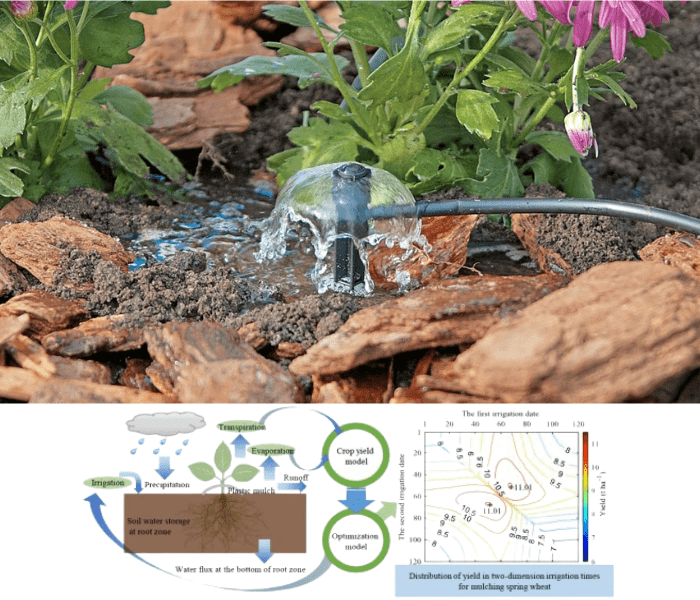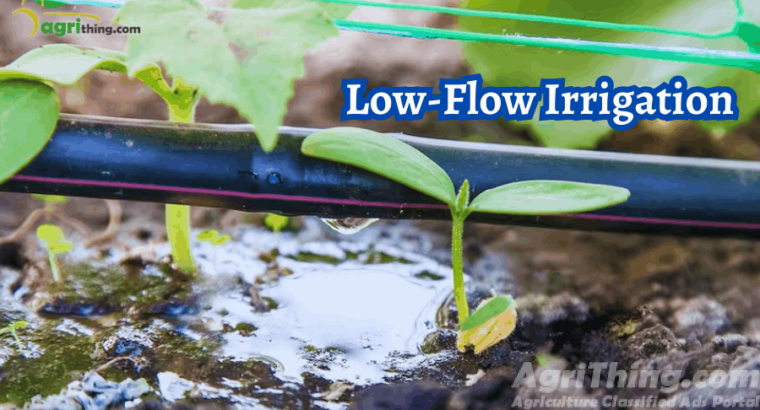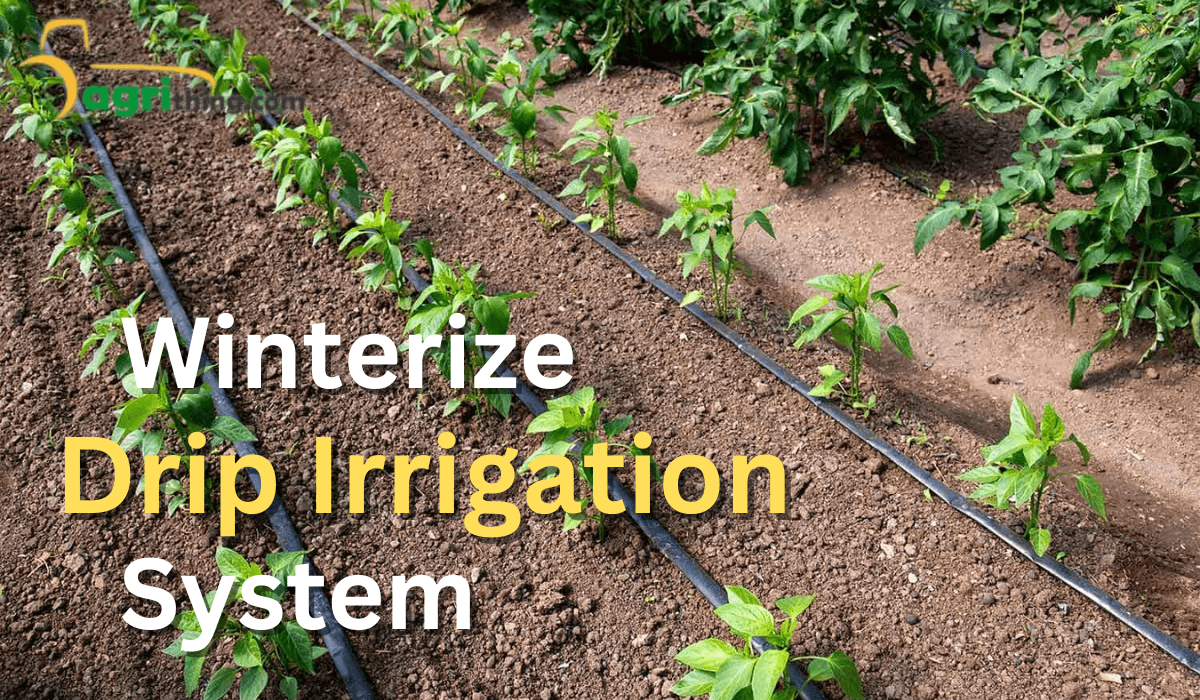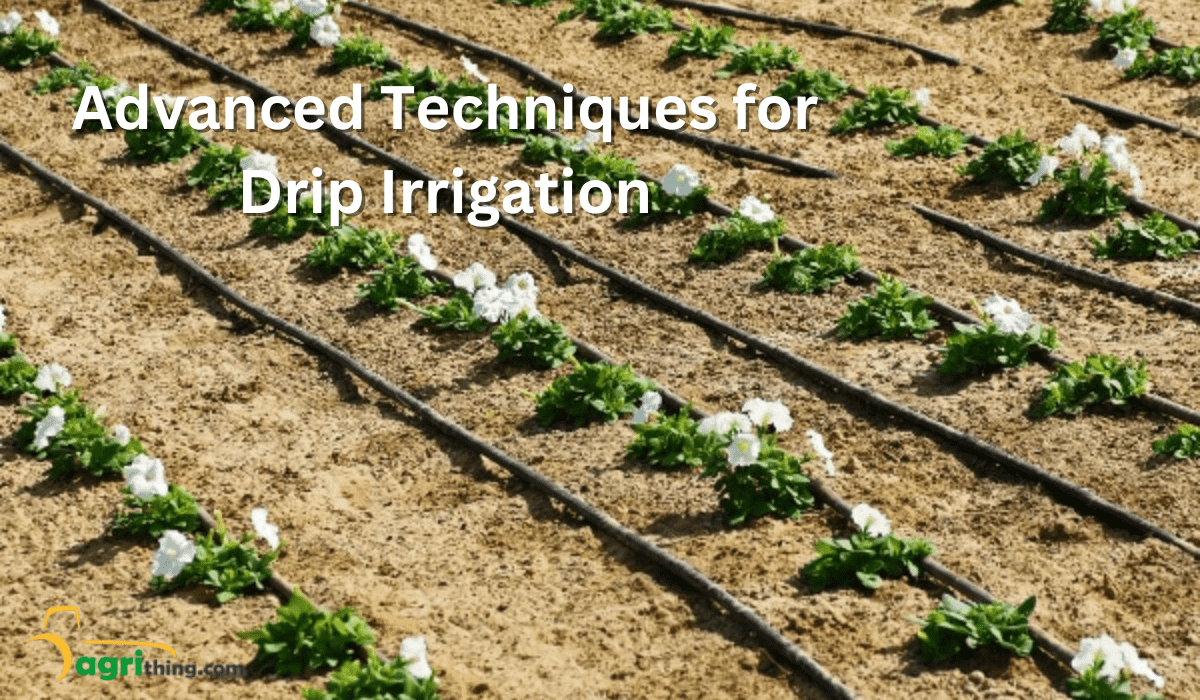Low-flow Irrigation: Calculating Water Needs for Healthy Plants
Low-flow irrigation is a highly efficient method of watering crops by delivering water directly to the plant’s root zones. It is essential to calculate the water requirements accurately. By determining the right amount of water needed, farmers can avoid water wastage and promote sustainable agricultural practices. In this article, we will guide you through the water requirements for drip irrigation. We will explore elements such as the water requirement for drip irrigation, drip irrigation water calculation, and water usage.
Table of Contents
Factors Affecting Water Requirements
Several factors influence the water requirements of crops in Low-flow irrigation systems. It is essential to consider these factors to accurately determine the water needs. The following are some of the critical factors:
Climate Conditions:
In Low-flow irrigation water calculation and determining water requirements for drip irrigation, the prevailing weather conditions play a significant role. Factors such as temperature, humidity, wind speed, and solar radiation directly impact the rate of evaporation and transpiration, which, in turn, affect the water requirements of plants. By considering these factors, farmers can accurately estimate the water needed for optimal crop growth.
Soil Type and Properties:
Different soil types have varying water-holding capacities and drainage characteristics. Soil texture, structure, and organic matter content impact the amount of water available to plants.
Crop Type and Growth Stage:
Different crops have varying water requirements at different growth stages. Young plants require less water than mature ones, and fruiting or flowering stages often demand additional water.
Irrigation System Efficiency:
Several factors need to be considered to assess the efficiency of the drip irrigation system. It ensures accurate drip irrigation water calculation, including the emitter flow rate, system uniformity, and potential losses caused by clogging or leaks. By evaluating these factors, farmers can determine the system’s water requirement for Low-flow irrigation and identify any areas of improvement. Maintaining a consistent and balanced flow rate among emitters promotes uniform water distribution and minimizes water waste.
Efficient Low-flow irrigation scheduling

Efficient Low-flow irrigation scheduling is essential for maximizing water use efficiency and promoting healthy plant growth. Farmers can optimize water delivery and minimize waste by developing a proper scheduling plan. Factors such as crop type, soil moisture levels, weather conditions, and evapotranspiration rates should be considered when determining the frequency and duration of irrigation events. Monitoring soil moisture levels using sensors or visual inspection can help fine-tune the irrigation schedule and prevent under or over-watering. Implementing smart controllers or timers can automate the scheduling process, ensuring consistent and timely irrigation.
Mastering irrigation time calculations
Mastering irrigation time calculations are crucial for efficient water management in irrigation systems. By accurately calculating the irrigation time, farmers can provide plants with the right amount of water without under or over-irrigating. Factors such as soil type, plant water requirements, and system flow rate should be considered in the calculations. The goal is to achieve adequate soil moisture while minimising water loss through runoff or deep percolation. Tools such as soil moisture sensors or evapotranspiration data can help refine the irrigation time calculation and optimise water use efficiency.
Determining Water Requirements
Specific formulas and concepts are utilised to accurately calculate the water requirements for drip irrigation. The following steps outline the process of determining water requirements.
Crop Water Requirement Formula
The crop water requirement (CWR) is calculated using the formula CWR = ETc x Kc, where ETc represents the reference evapotranspiration, and Kc is the crop coefficient. ETc accounts for water lost through evaporation from the soil surface and transpiration from the plants.
Evapotranspiration and Crop Coefficient
Evapotranspiration, which includes both evaporation and plant transpiration, is crucial in calculating water requirements for Low-flow irrigation. Weather data is used to estimate the reference evapotranspiration (ET0), which serves as a baseline for these calculations. The crop coefficient (Kc) is applied to adjust the ET0 for specific crops. The crop coefficient (Kc) accounts for variations in water requirements by considering crop type, growth stage, and environmental conditions. By incorporating the crop coefficient into drip irrigation water usage calculations, farmers can accurately determine the water needed for optimal crop growth.


Adjusting for Soil and Climate Factors
Soil and climate factors modify the crop water requirement. Adjustments are made based on soil moisture holding capacity, water infiltration rate, and climate-related factors like wind or temperature.
Estimating Irrigation System Efficiency
The efficiency of the drip irrigation system is considered to account for any losses or inefficiencies in water delivery. The system’s efficiency can be determined through various methods, such as conducting a distribution uniformity test or consulting manufacturer specifications.
Steps to Calculate Water Requirements
Now let’s delve into the step-by-step process of calculating water requirements for Low-flow irrigation.
Necessary Information
Gather essential information such as crop type, growth stage, weather data, soil properties, and details about the Low-flow irrigation system in use.
Calculate Crop Water Requirement:
Use the crop water requirement formula (CWR = ETc x Kc) to determine the water requirement for the specific crop at its current growth stage.
Adjust for Soil and Climate Factors:
Make adjustments to the crop water requirement based on soil properties and climate factors. For example, sandy soils may require more frequent irrigation than clay soils.
Determine Irrigation System Efficiency
Several factors need to be considered to assess the efficiency of the Low-flow irrigation system and ensure accurate drip irrigation water calculation, including the emitter flow rate, system uniformity, and potential losses caused by clogging or leaks. By evaluating these factors, farmers can determine the system’s water requirement for Low-flow irrigation and identify any areas of improvement. Maintaining a consistent and balanced flow rate among emitters promotes uniform water distribution and minimizes water waste.
Calculate Total Water Requirement
Multiply the adjusted crop water requirement by the irrigation system efficiency to determine the total water requirement for the specific crop and irrigation system.
Example Calculation
Let’s illustrate the water requirement calculation with an example scenario:
Crop: Tomato Growth Stage:
- Fruit development (Kc = 1.2) Reference Evapotranspiration (ET0): 5 mm/day Soil Type: Loam (holding capacity = 15 mm/cm) Irrigation System Efficiency: 90%
- Crop Water Requirement (CWR) = ETc x Kc CWR = 5 mm/day x 1.2 = 6 mm/day.
Adjusting for Soil and Climate Factors:
Soil moisture holding capacity = 15 mm/cm Adjustment factor = 15 mm/cm ÷ 10 mm/cm = 1.5
Adjusted CWR = CWR x Adjustment factor Adjusted CWR = 6 mm/day x 1.5 = 9 mm/day.
Determine Irrigation System Efficiency:
Irrigation system efficiency = 90%
Calculate Total Water Requirement:
Total Water Requirement = Adjusted CWR ÷ Irrigation system efficiency Total Water Requirement = 9 mm/day ÷ 0.9 = 10 mm/day. Therefore, in this example, the tomato crop would require approximately 10 mm of water per day using Low-flow irrigation.


How to Calculate Drip Line Length and Run Time
1. Drip Line Calculations:
- Calculate Required Litres per day: Area x Average water loss = Required Litres per day.
- Calculate Litres per hour (L/h): (Dripline length in meters ÷ Dripper spacing in meters) x Litre output = L/h.
- Convert L/h to L/m: L/h ÷ 60 = L/m.
- Calculate Run time: Required Litres per day ÷ L/m = Run time.
2. Raised Bed:
- The raised bed measures 4m x 2m, which equals 8m².
- On a dry day, an average plant needs 4 – 5mm (4.5mm) of water to replace the average water loss.
- We will use 1.8 L/h with 30cm spacing and a 13/14mm Drip Line. Each dripper outlet soaks into a cone shape of 30cm on each side, ensuring water reaches the plant’s roots.
3. Raised bed watering requirements per day:
To calculate the required water for the raised bed, multiply the bed size (in square meters) by the water loss on a dry day. 8m² x 4.5mm = 36 liters per day.
4. Establishing Your Drip Line: Proposed method:
- Use elbow and tee connectors to create a grid formation.
- Lay the Drip Line pipe in rows, with the same distance apart as the dripper spacing.
- Ensure an adequate wetting pattern by spacing rows of pipe 30cm apart (if the dripper spacing is 30cm).
- Secure the pipe using stakes and an end piece to close the system.
- For the given scenario of using 16m of Drip Line with a spacing of 30cm: (16m ÷ 0.3m) x 1.8 L/h = 96 L/h. Convert L/h to L/m: 96 L/h ÷ 60 = 1.6 Liters per Minute (L/m). Run time of Drip Line: 36L ÷ 1.6 L/m = 22.5 minutes. Run time = 22.5 minutes.
5. Testing Soil Water Distribution and Wetting Patterns:
- Depending on soil type and climate, you may need to adjust watering times. Follow these steps to check water distribution:
- Look for a wet spot of 8-10cm in diameter from the drip emitter.
- Test the wetting pattern by running the system for 30 minutes.
- Stop the water flow for another 30 minutes.
- Dig into the soil below the emitter to see how far the water has moved vertically and horizontally.
- Ideally, there should be a 30cm wetting area around the emitter.
The Role of Pressure Regulators in Low-flow irrigation
Pressure regulators are vital in Low-flow irrigation systems by maintaining consistent and optimal water pressure. They prevent excessive pressure that could damage the emitters or cause water waste. By reducing the pressure to the desired level, pressure regulators ensure even water distribution and prevent variations in flow rate among different parts of the system. This element helps to maximize the efficiency of water delivery to plants and promotes uniform plant growth. Properly installed and calibrated pressure regulators contribute to a Low-flow irrigation system’s overall effectiveness and success.
Tips for Efficient Water Use
To maximize water efficiency in Low-flow irrigation systems, consider implementing the following tips.
Proper Scheduling and Timing:
Irrigate during more excellent parts of the day, such as early morning or late evening, to minimize evaporation losses. Develop a watering schedule based on the specific crop’s needs and growth stage.
Use of Soil Moisture Sensors:
Install soil moisture sensors to monitor the moisture content at different depths. This aspect helps determine when irrigation is necessary, preventing under or overwatering.
Mulching and Water-Saving Techniques:
Apply mulch around the plants to reduce evaporation, conserve soil moisture, and suppress weed growth. Explore water-saving techniques like using pressure-compensating emitters or employing drip irrigation in combination with other water-saving methods.
Conclusion
Calculating water requirements for Low-flow irrigation is essential for optimizing plant growth, minimizing water waste, and promoting sustainable agricultural practices. By considering climate conditions, soil properties, crop type, and irrigation system efficiency, farmers can accurately determine water needs. Implementing efficient water usage strategies and drip irrigation techniques help conserve water resources and support sustainable food production. Factors such as drip irrigation water usage and pressure requirements are crucial in achieving these goals. Low-flow irrigation systems ensure efficient water distribution through accurate calculations and proper implementation, ultimately reducing water usage while maximizing crop yield.
Frequently Asked Questions (FAQ’s)
Why is it important to calculate water requirements for Low-flow irrigation?
Calculating water requirements ensures that plants receive the right amount of water, promoting their healthy growth while avoiding water wastage and optimizing irrigation efficiency.
Can I use the same water requirement calculation for all crops?
No, different crops have varying water requirements. It’s essential to consider the specific crop’s characteristics, growth stage, and water needs when calculating water requirements.
What factors should I consider when determining irrigation system efficiency?
The efficiency of drip irrigation water usage is influenced by factors such as emitter flow rate, system uniformity, clogging or leakage issues, and maintenance practices. These factors play a crucial role in ensuring the proper delivery of water to the crops, minimizing water wastage, and maximizing the effectiveness of the drip irrigation system.
How often should I adjust the water requirements calculation?
Water requirement calculations should be adjusted periodically, considering changes in crop growth stage, weather conditions, and any modifications to the irrigation system or soil properties.
Are there any tools or software available to help with water requirement calculations?
Various tools and software are available to calculate the water requirement for drip irrigation. These tools consider factors like weather data, crop coefficients, and soil properties to provide accurate estimations, facilitating efficient water management for different crops and irrigation systems. Utilizing such tools ensures optimal water usage in drip irrigation practices.
Related Articles on Drip Irrigation
looking to purchase a Drip irrigation accessories? Visit our Agricomplex website. Easy and helpful information just for you!
People Also Asked
How do you calculate water requirements for drip irrigation?
Water requirements for drip irrigation can be calculated by multiplying the crop water requirement (CWR) with the crop coefficient (Kc).
What factors influence the water requirements in drip irrigation?
Water requirement for drip irrigation is influenced by factors such as climate conditions and crop type, which directly impact the evapotranspiration rate and crop water needs. Additionally, soil properties, including texture and water-holding capacity, play a crucial role in determining the optimal water usage.
Why is it essential to consider climate conditions in Low-flow irrigation water calculation?
Low-flow irrigation water calculation is essential, considering climate conditions, as factors such as temperature, humidity, wind speed, and solar radiation directly influence the rate of evaporation and transpiration. These factors have a direct impact on the water requirements of plants, making accurate water calculation crucial for effective Low-flow irrigation practices.
What is the role of irrigation system efficiency in determining water requirements for drip irrigation?
Irrigation system efficiency plays a crucial role in determining water requirements for drip irrigation by considering factors such as emitter flow rate, system uniformity, and potential losses, ensuring accurate water calculation and minimizing wastage.
Are there any tools or methods available to assess the efficiency of a drip irrigation system?
Yes, tools and methods are available to assess the efficiency of a drip irrigation system, such as conducting distribution uniformity tests and consulting manufacturer specifications.




